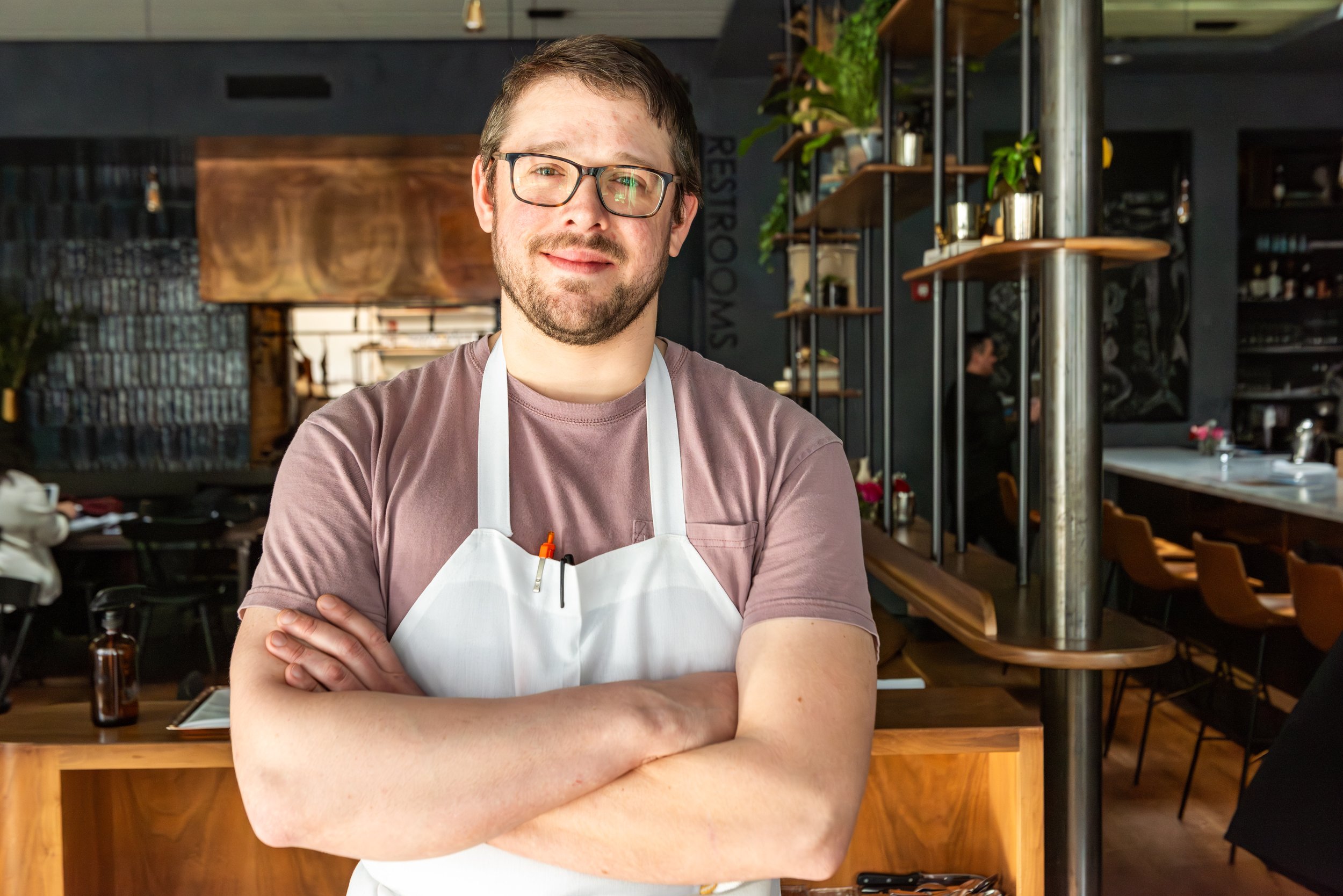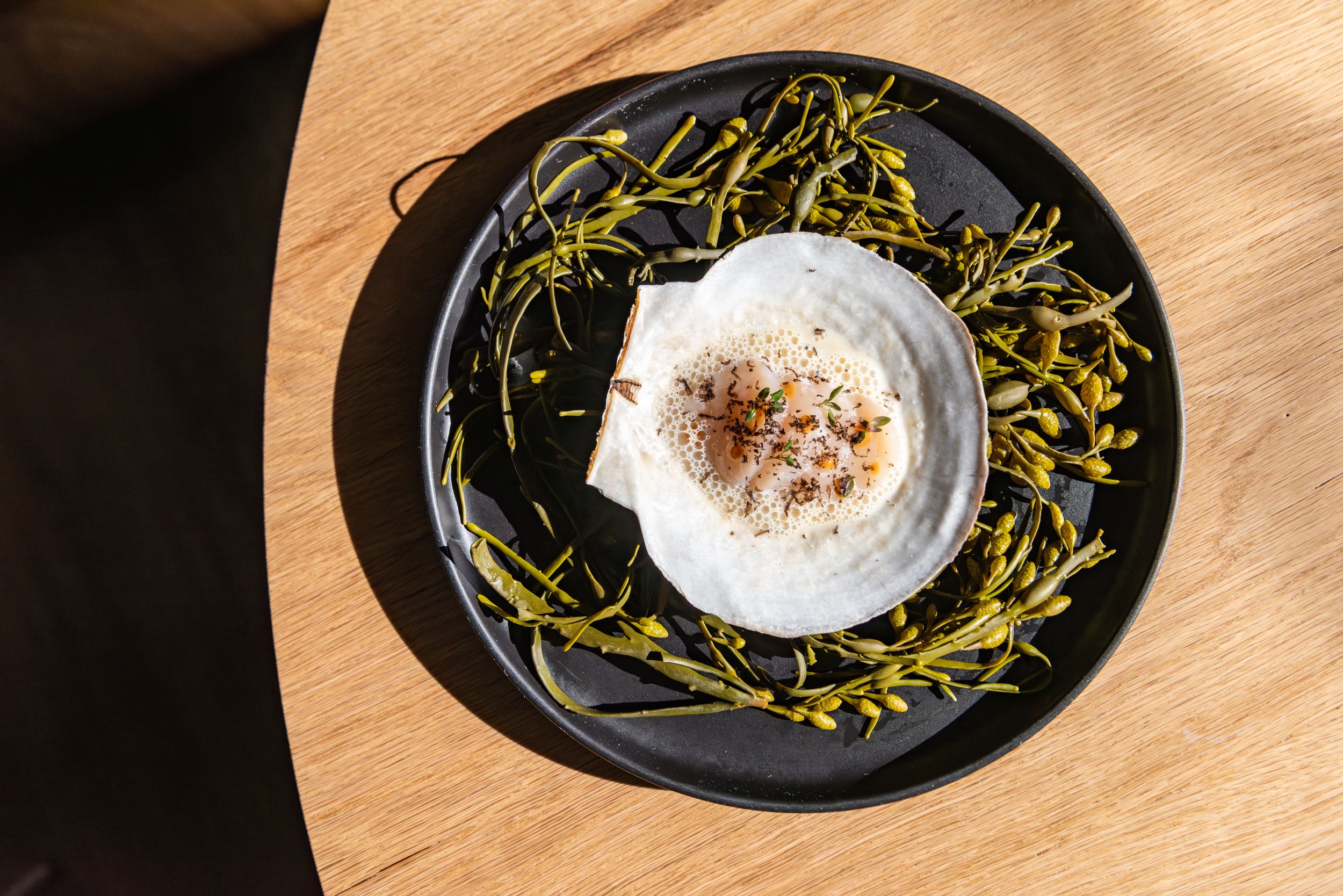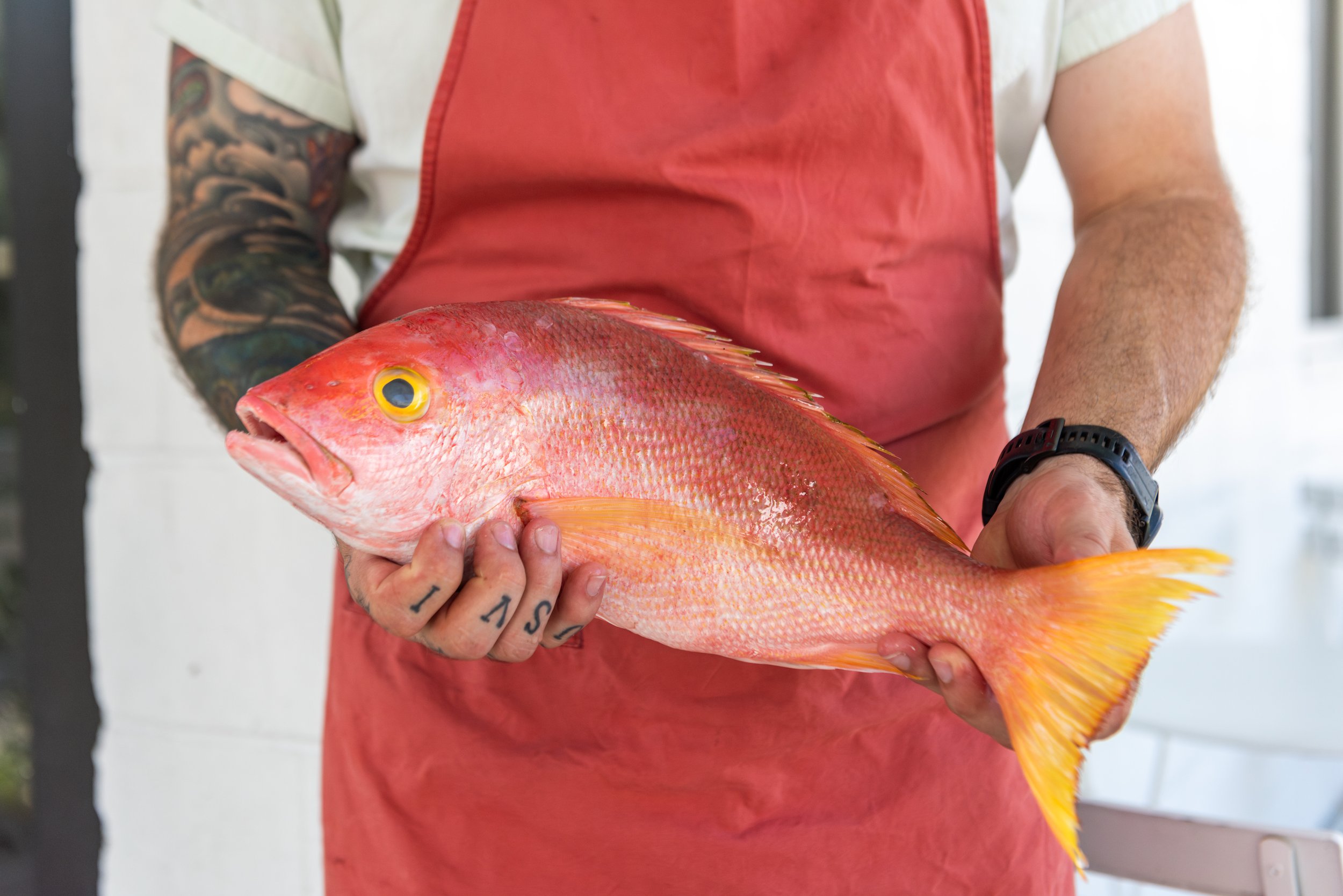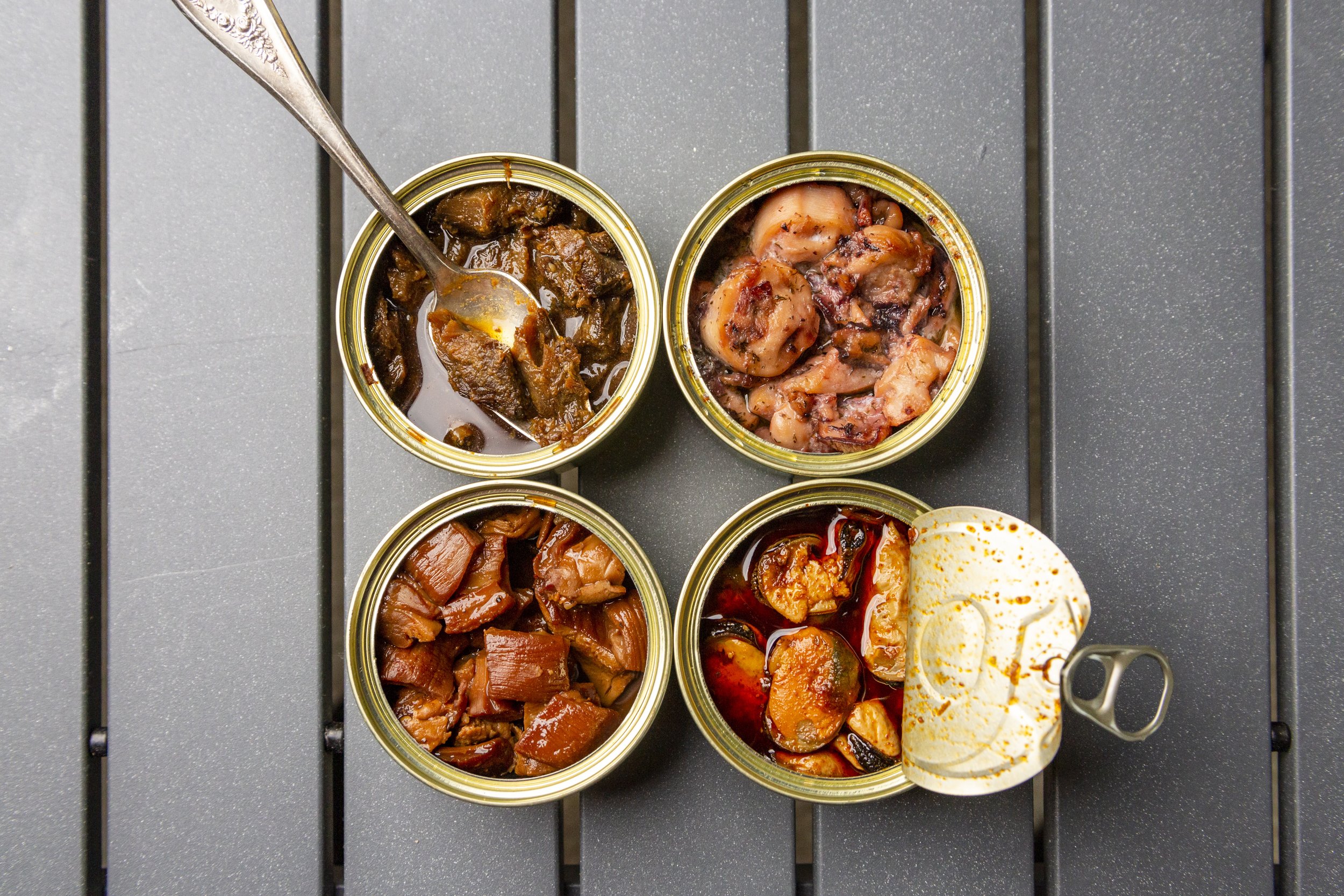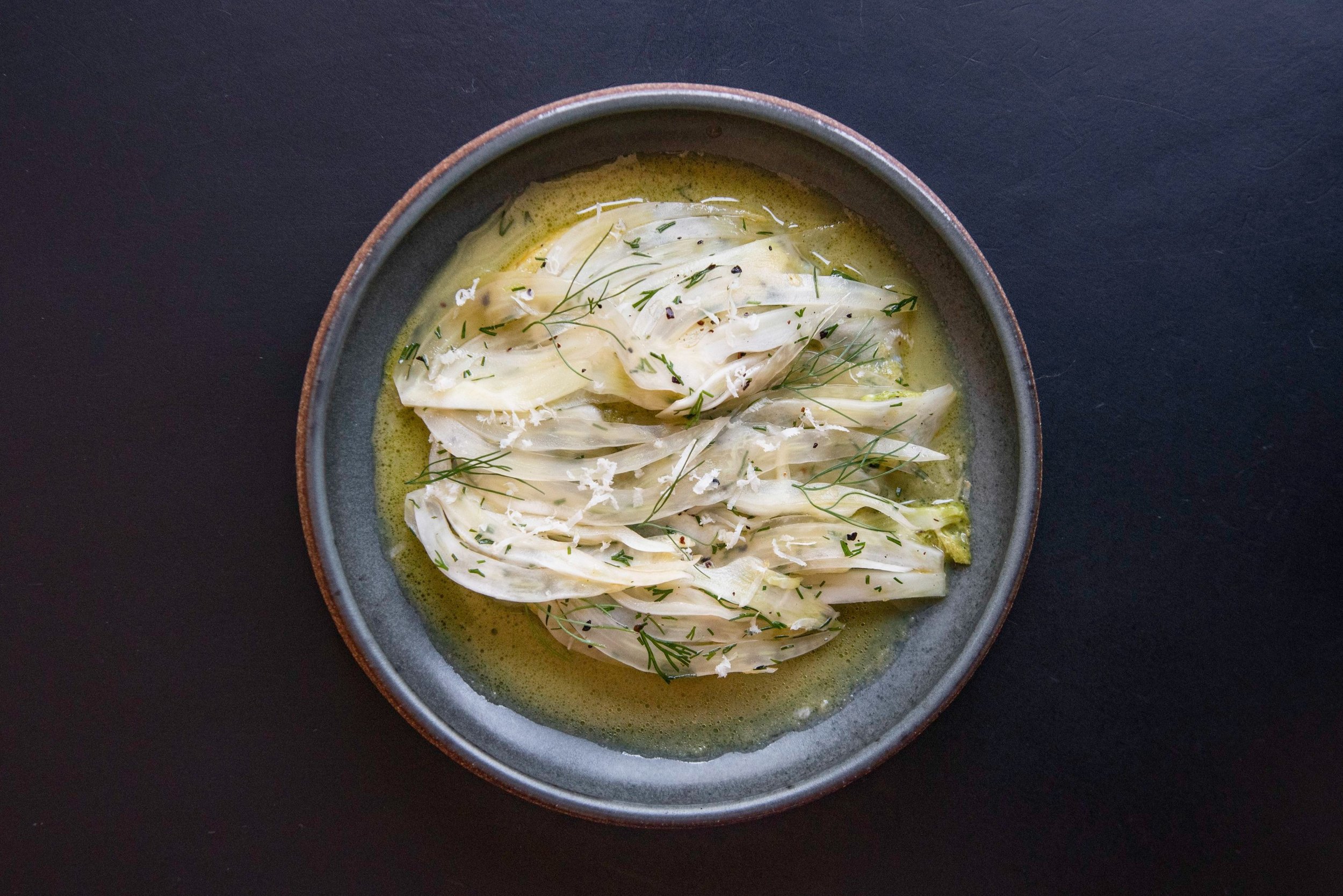Skirts, Collars, and Bones
Here’s how a few Boston chefs are making the most of fish trim.
If you look beyond the lobster rolls, clams, and fish and chips, you will see that there’s a growing number of chefs in Boston who are serious about whole fish and seafood utilization. Close relationships with fishermen and purveyors, and a culture of environmental consciousness in restaurants, has supercharged a fin-to-tail approach. “The reason that I tend to like to use whole fish is because, as a fisherman, that's what I'm used to,” says Chef Lukas Dow of Judy’s Bay. “I want to figure out the best way to use the entire thing, especially because going through the experience of killing a creature makes you feel more responsibility to want to give the most [and] get the most from it. It’s rooted in honoring the animal as much as possible.”
Lobster Roe Pasta: Spaghetti, Lobster Roe Cream Sauce, Watercress At Judy’s Bay
Chef Lukas Dow of Judy’s Bay
But as noble as utilization can be, there is a financial incentive as well. The goal is “to reduce food waste, but also reduce food cost,” says Dow, “it's both financially and environmentally righteous.” Oftentimes, particular cuts—even atypical cuts like the collar, head, and tail which Dow sometimes runs as specials—can wind up paying for the whole fish. It’s a symbiotic relationship.
“[You] get a better bang for your buck when using the whole fish,” says Chef Brian Gianpoalo. At Moëca, Gianpoalo and his team are dedicated to getting the freshest fish possible. “We generally will bring in whole unscaled, ungutted fish…that way we know it's gone through the least amount of hands before it gets to us.” Dishes like Gianpoalo’s tuna ‘nduja repurpose the “sinewy meat” and “stuff left between each of the rib and spine bones.” Instead of doing a tonnato, Gianpoalo wanted to try out something different with the scraps they were pulling. “We were accumulating so much [tuna] that doing a fresh ‘nduja became such a great idea and worked out really well,” he says. The meat is ground and mixed with chile paste, lemon juice, and olive oil; topped with smoked sea salt and onion powder; and served with house sourdough.
Tuna ‘Nduja: Tuna, Chile Paste, Smoked Onion Powder, Sea Salt, Lemon, Olive Oil, Sourdough at Moeca
Chef Brian Gianpoalo. of Moeca
Much like Gianpoalo, Chef Patrick Lipscomb is diligent about making the most of his offcuts and trim. At Hook + Line, Lipscomb uses scallop skirts and roe as the base for a foam in his local diver scallop dish. The scallops “are special because the fisherman has to dive and you can't get them if the weather is bad. Someone picks them by hand,” he says. Motivated by the quality, Lipscomb used techniques he learned while working at Uni, Craigie on Main, and Menton to utilize every piece of the mollusk, even the shell. The roe is cured while the skirt and feet are dehydrated and cooked down with milk, thyme, garlic, and hondashi. The skirt mixture is puréed with the cured roe and soy lecithin, blended into a frothed-up foam, and spooned around slices of fresh scallop with caramelized egg yolk, yuzu gel, and shaved truffle.
Guests, while sometimes apprehensive, have come around to these unconventional cuts. “We luckily don't have to do a ton of convincing,” says Dow, guests “come in knowing and open.” Part of that openness comes from the fact that many of the preparations are approachable and even nostalgic. Gianpoalo’s riff on Trippa alla Romana, for example, swaps out traditional tripe with scallop skirt. “I had seen recipes for braised scallop skirts and there have been chefs relating it to the texture of tripe,” he says. “I applied it and it tasted great. Seemed like an easy sell to guests. It's a nostalgic flavor.”
Diver Scallop, Scallop Foam, Caramelized Egg Yolk, Yuzu, Black Truffle at HoOk + Line
Chef Patrick Lipscomb of Hook + LIne
This commitment to utilization serves as a catalyst for dish development, but it also provides the opportunity to “try new techniques,” says Lipscomb. And “from a creative standpoint, it's nice to be challenged to use different parts of the fish,” says Dow. From smoked bluefish skin furikake to John Dory liver mousse to deep fried fish fins, chefs in Boston are thinking resourcefully when it comes to fish and seafood. They are joining an international effort to make the most of what the sea has to offer and exemplifying what makes their New England waters special.




